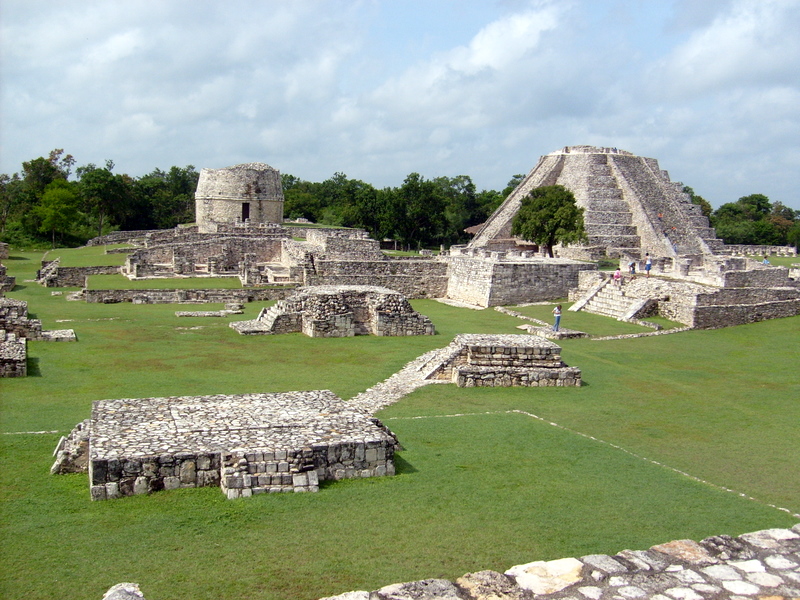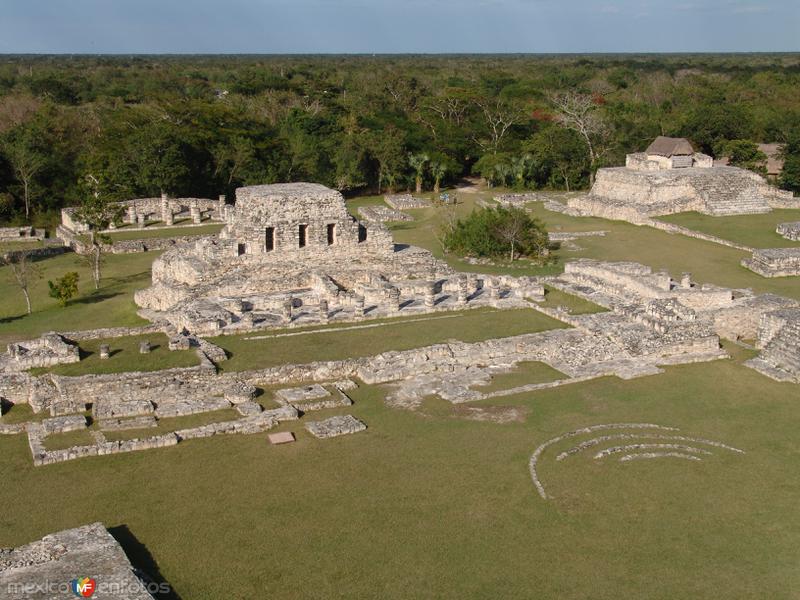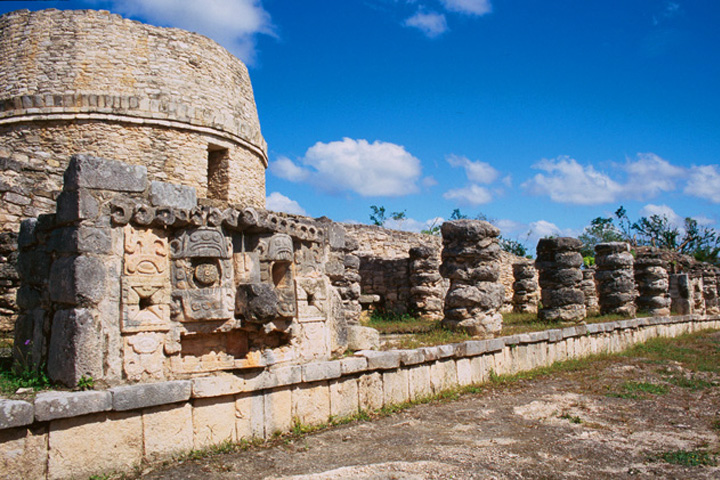
The walled city of Mayapán, known as "Flag of the Mayans", is considered the last great Mayan capital. It has an area of 4 km2, in which there are approximately 4,000 structures.
Its beginnings date back to the beginning of our era, reaching its maximum splendor in the Postclassic Period (1200 - 1450 AD). It is believed that this city had a population of 12,000 inhabitants. It was founded by the cocom group, whom experts associate with the bearers of the so-called Mayan-Toltec culture. It was the headquarters of "The League of Mayapán", a confederation that brought together the chiefs of Uxmal and Chichén Itzá. The disputes for control ended with the defeat of the Itzáes, who governed the region, and their flight was towards the Petén, where they founded the city of Tayasal. The hegemony of the League was exercised from that moment (end of the 13th century) by the cocomes of Mayapán, although with strong opposition from the inhabitants of the other Mayan kingdoms of the Peninsula. This alliance seems to have been dissolved around the year 1440,
Worthy of admiration is the work of its expert sculptors, which is distinguished by its large number of pieces of modeled stucco, which reflects the high quality of their works. It is worth highlighting the mural paintings in which war scenes and events related to the cult of death are captured, which makes evident its cultural links with the Altiplano of Central Mexico.
The city of Mayapán was built in the likeness of Chichén Itzá. Its main buildings are a copy of the capital of the Itzáes. The construction style incorporated elements typical of the architecture of Central Mexico, combined with features inherited from the ancient Mayan cities. However, with the fall of Chichén, Mayapán developed its own style oriented towards the reworking of ancient forms. Its main building is called El Castillo, being a pyramidal basement of 9 bodies with a height of 15 meters, where an interesting phenomenon of light and shadow takes place during the winter solstice (December 21), identical to that of Chichén Itzá .
You can also see civic, administrative and religious buildings, as well as the residences of the ruling class. These are buildings built on foundations that have corridors with columns, temples and oratories with an altar at the back and benches on the sides. The round buildings known as Observatories and the small sanctuaries are also representative.
https://www.yucatan.gob.mx/?p=mayapan






 = new reply since forum marked as read
= new reply since forum marked as read






